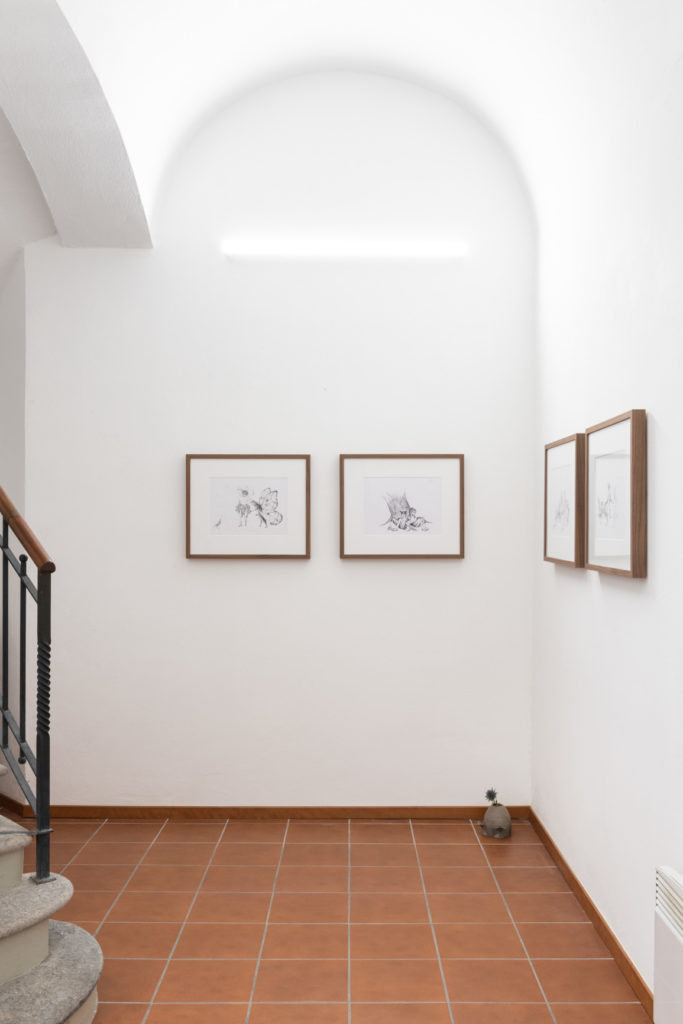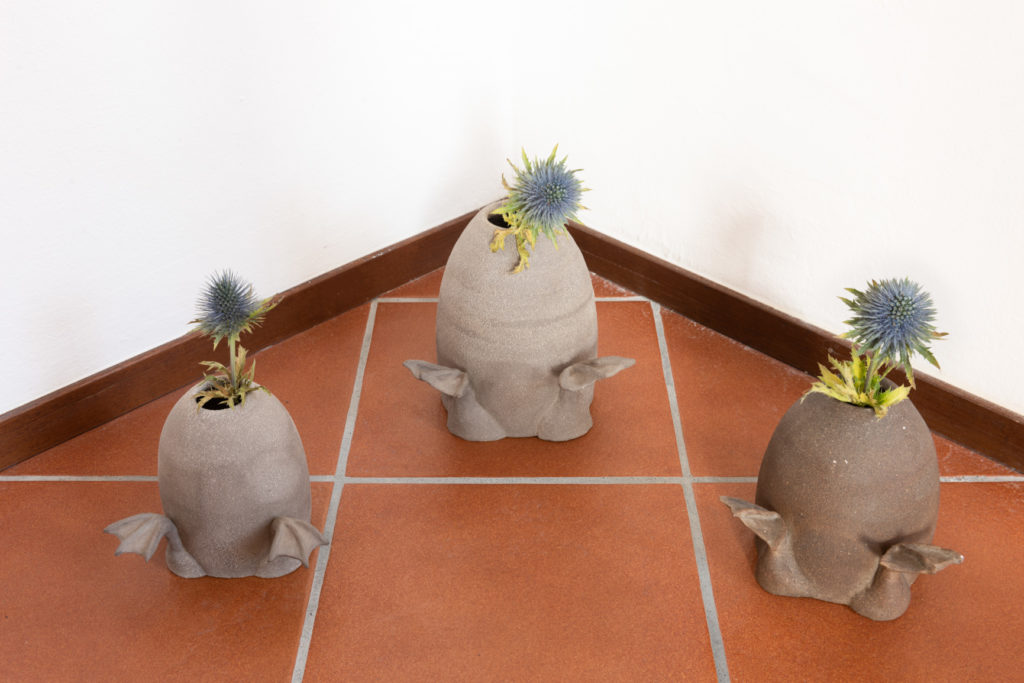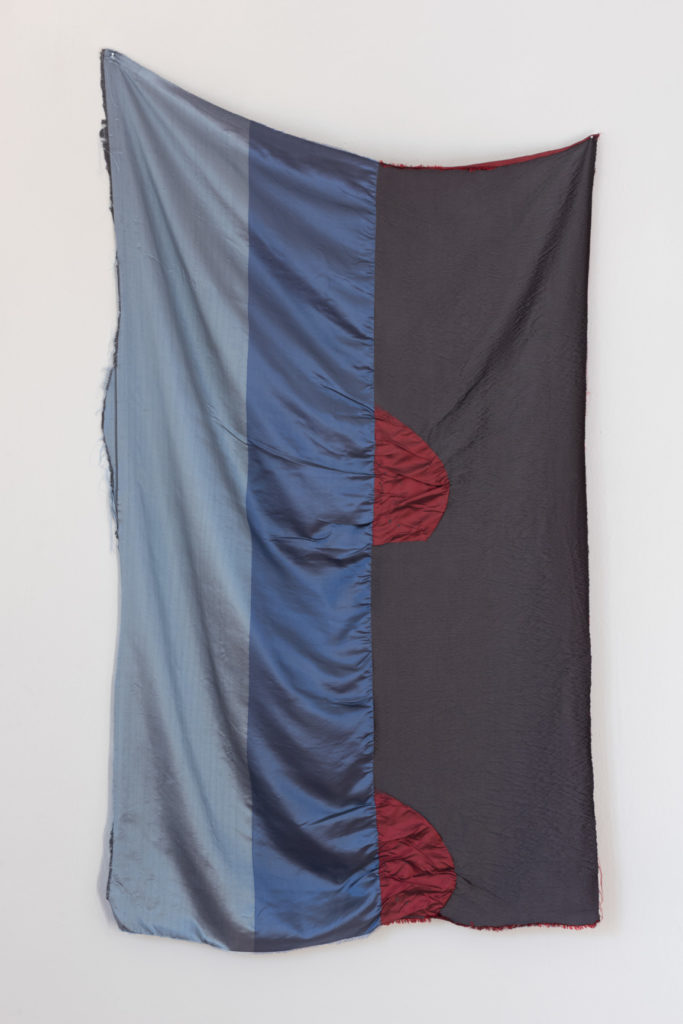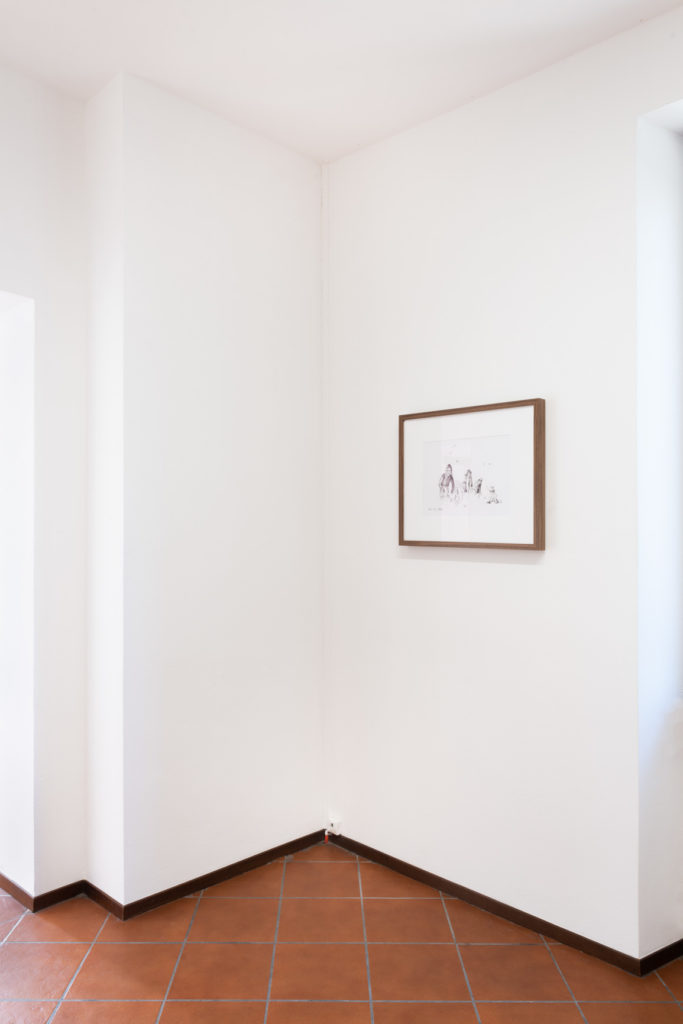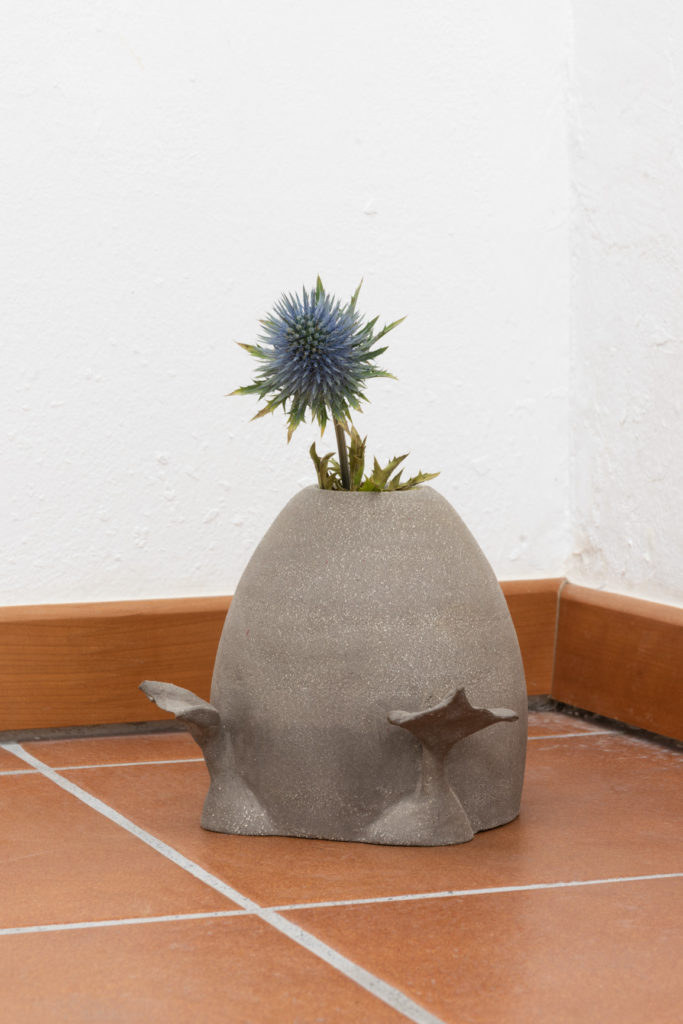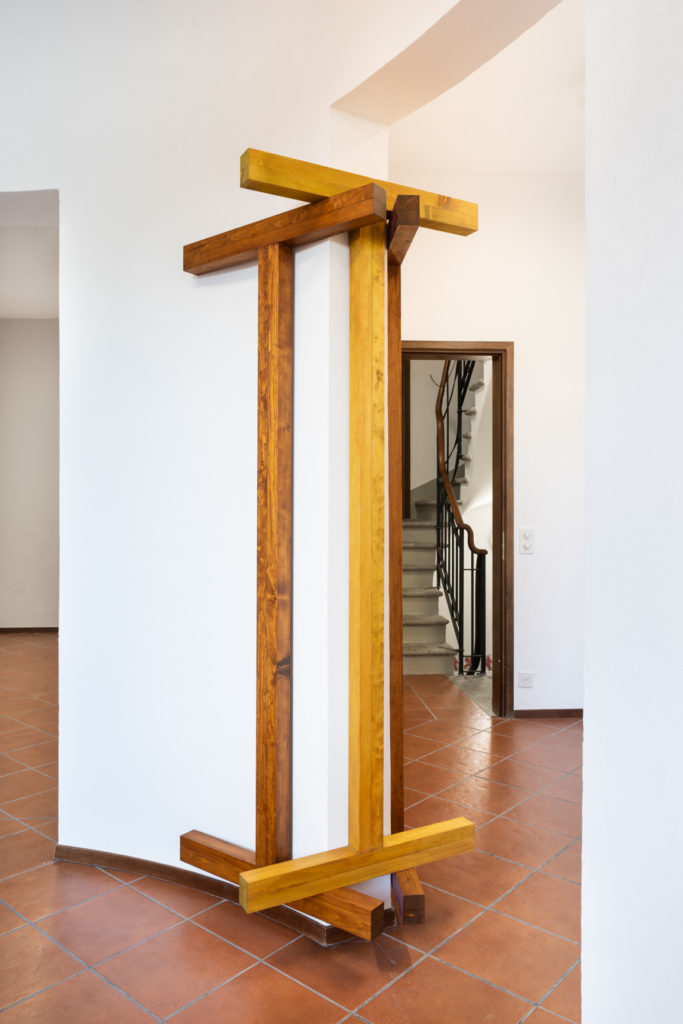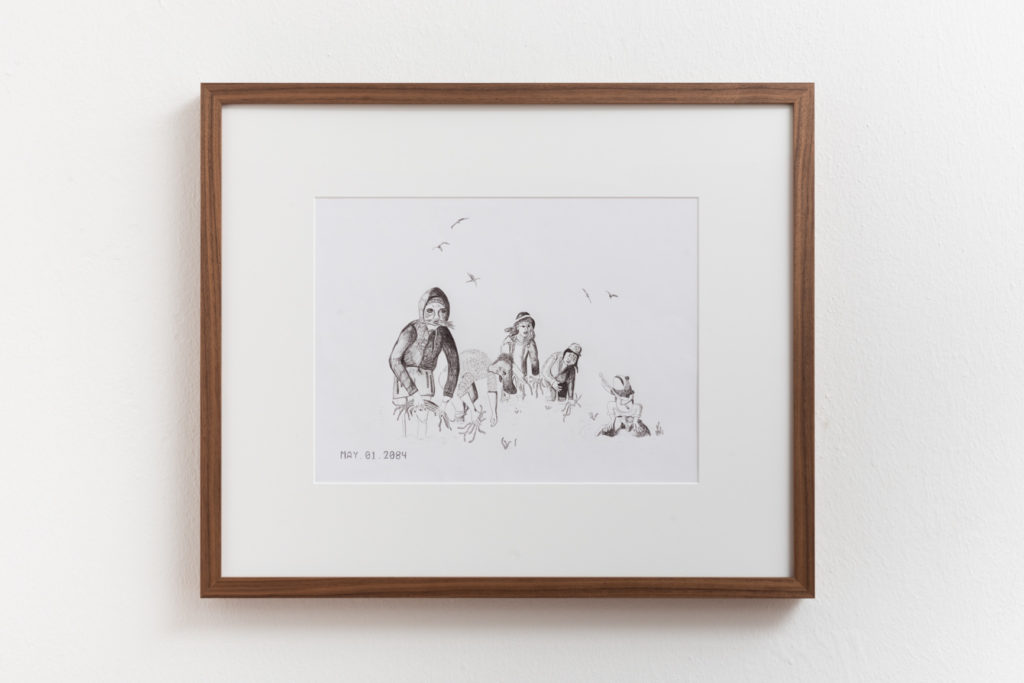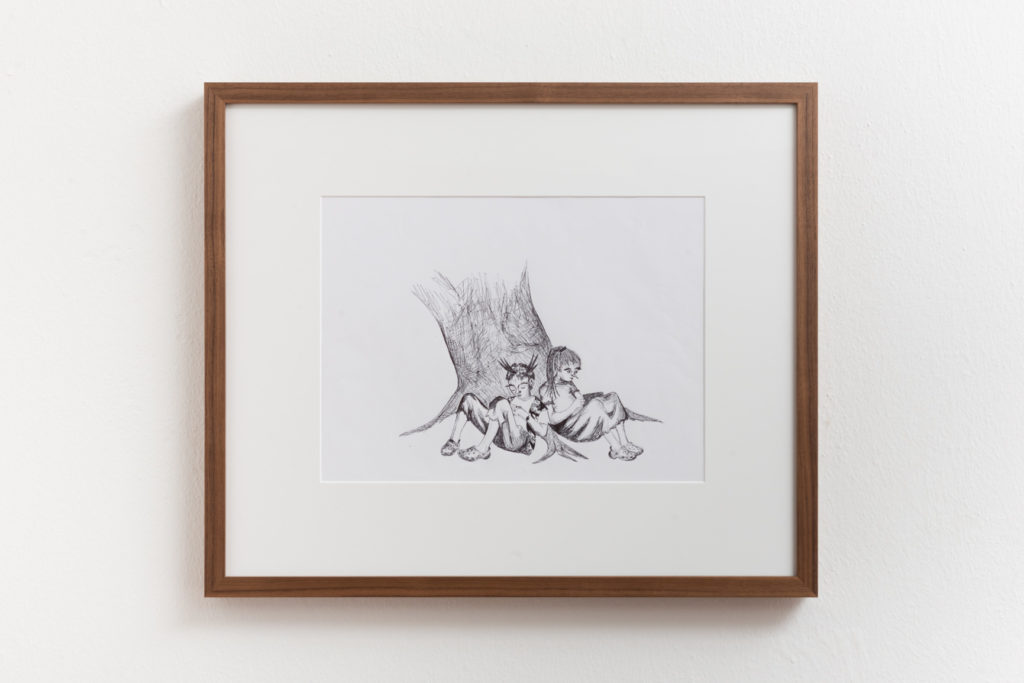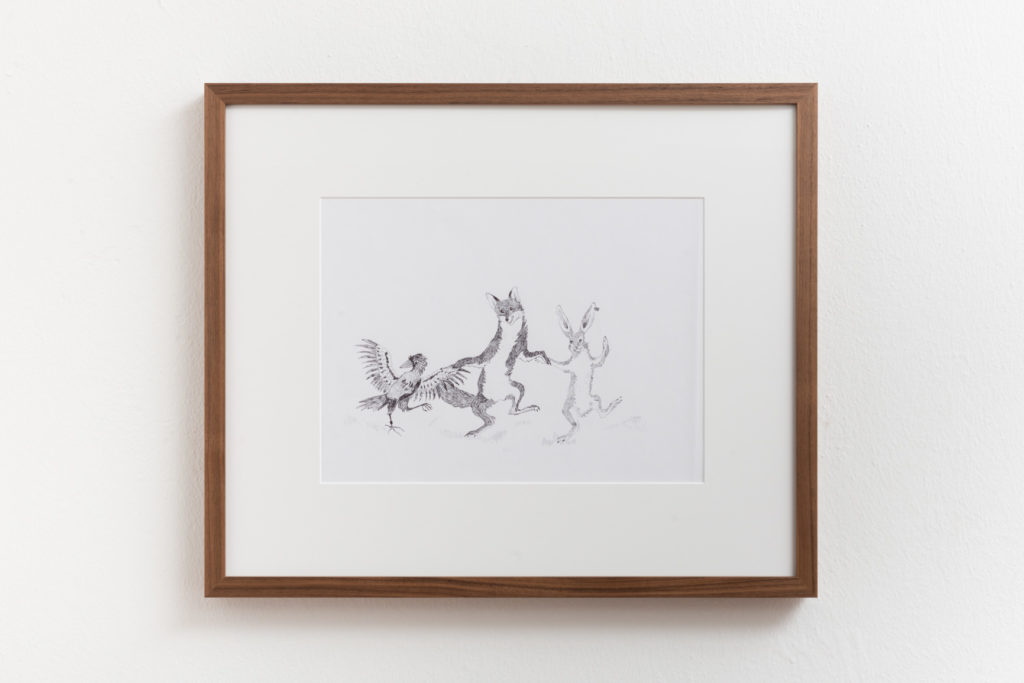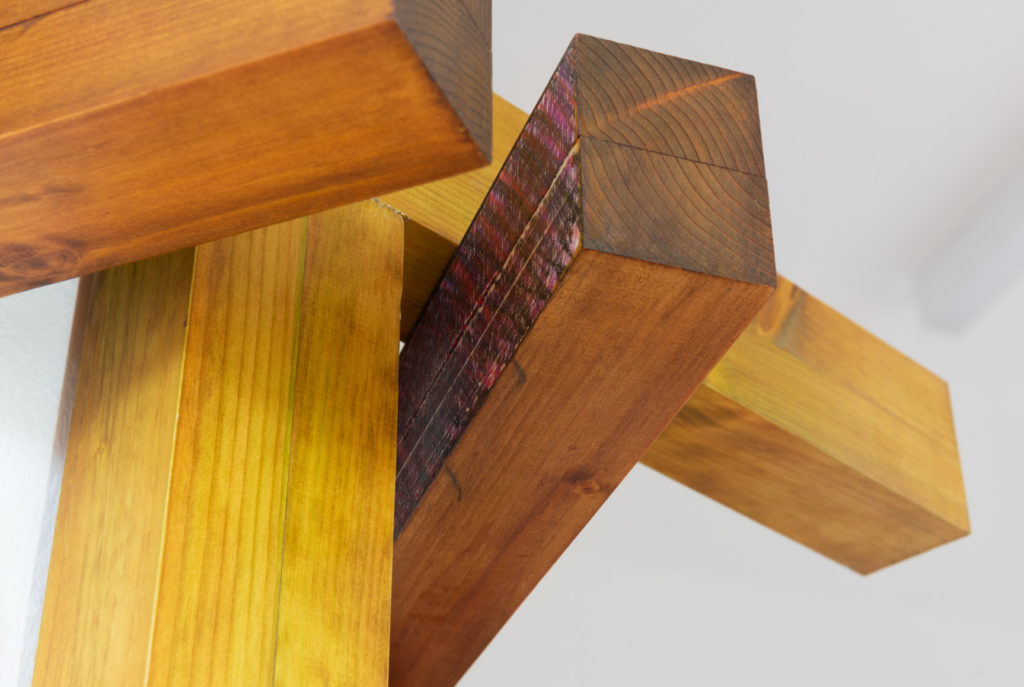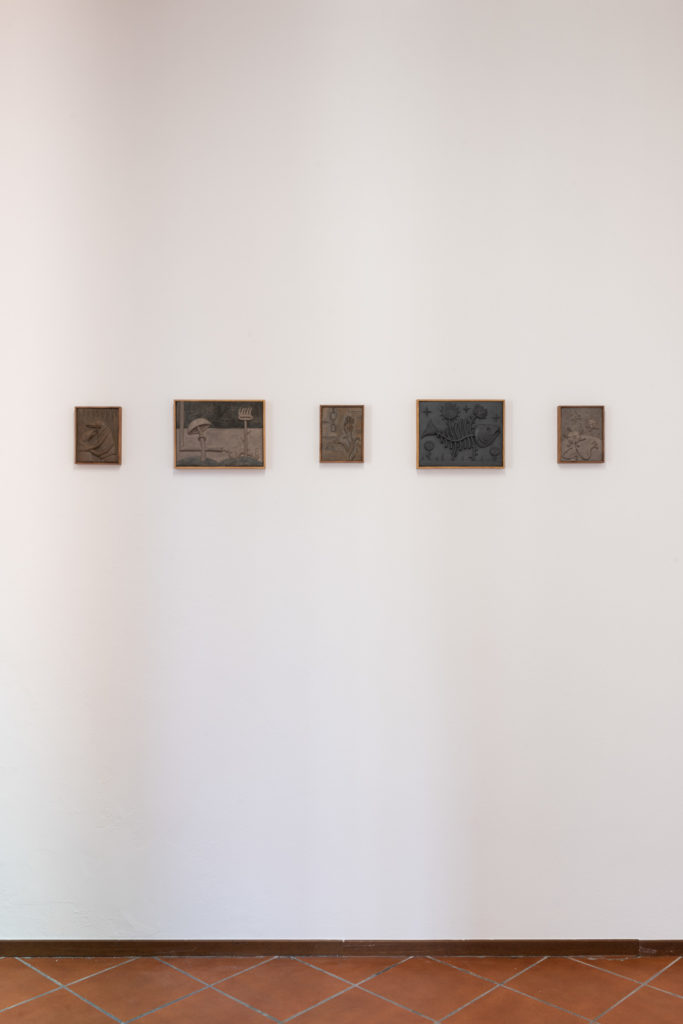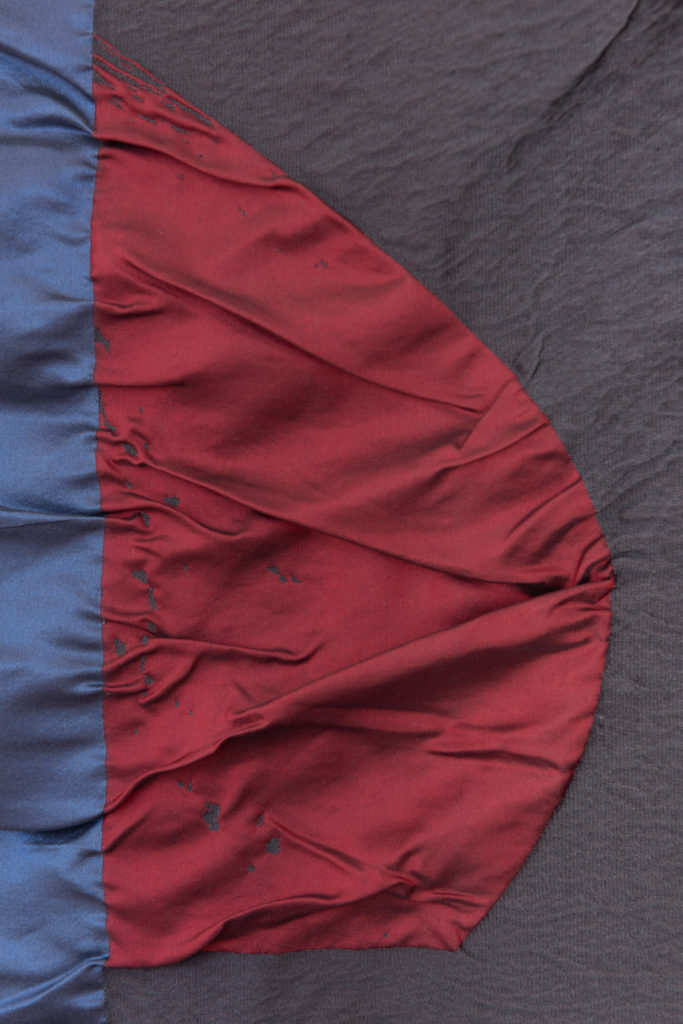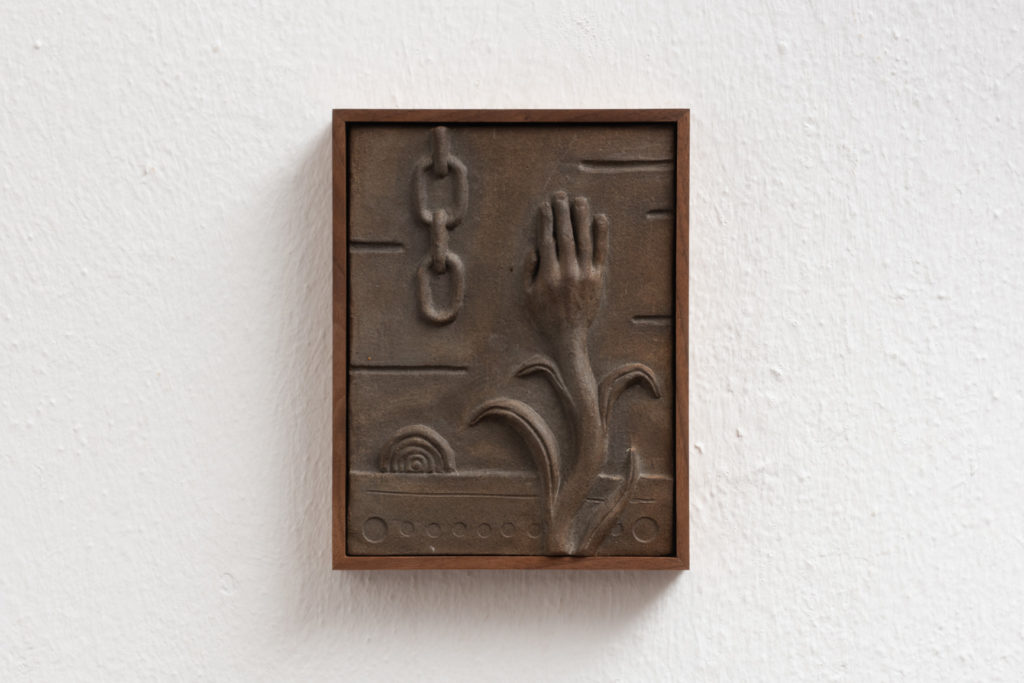Sbandare
Adrien Chevalley, Noemi Pfister, Margherita Raso e Marco Rigoni
04.02 - 01.04.2023
Mi fanno male i capelli
Mi fanno male i capelli mentre scorro le dita sulla lunghezza. Cerco di decifrarne le informazioni. Durante la notte mi sveglio all’incirca ogni due ore per controllare. Ho spesso il timore che le proteine possano decidere di rompersi, di lasciar andare il loro millenario abbraccio, svegliandomi così catapultata in un giorno di gennaio mentre volo verso quello che poi scoprirò essere il vetro di una finestra.
L’impronta lasciata dall’impatto improvviso sul vetro è una macchia alata molto difficile da guardare. A questo penso mentre scrivo; a quanto sia difficile per me distrarmi da pensieri iper-accellerati. Una modifica nightcore2, impressa nella mia genetica dalla luce artificiale dello schermo che illumina le mie notti.
Quando ho ricevuto le proposte dalle artistə invitatə a SBANDARE ho pensato a quanto l’insieme di queste opere, un concanetamento di immagini e forme, mi riconducesse a una sensazione di nostalgia e recriminazione. Un pò come un dolore ai capelli.
Le produzioni artistiche di Noemi, Margherita, Marco e Adrien portano il cuore al corecore3. Non si tratta di una vicinanza estetica con questo specifico termine ma perlopiù di una percezione comune della realtà -materiale o digitale-. Il corecore si presenta come l’antitesi del genere stesso; il suo contenuto può essere qualsiasi cosa e le suə creatorə possono usare qualsiasi tipo di media per trasmettere una premessa centrale. La tendenza di questo fenomeno “gioca sul suffisso -core creando un ‘core’ dalla coscienza collettiva di tutti i ‘core’4”. Una coscienza collettiva sovrasaturata da contenuti avariati che ci ha portatə a vivere una follia romanzata. In questo dominio affollato dell’immaginazione, ci ritroviamo davanti a codici, scene e immagini che sembrano predire un futuro diverso dal presente che stiamo vivendo.
Una sbandata speranzosa questa esposizione, che si apre con Transcript di Margherita Raso. Un’opera che è l’avanzo di un codice, letto e digerito da un telaio Jacquard5, la cui leggibilità è celata dalla trama dell’intreccio. La macchina allucinata6 tesse, sopra e attraverso, lasciandoci dei fili blu a testimoniare il suo funzionamento. Immediatamente a destra si aggrappa all’architettura A Fateful Rendezvous (Tartan trousers, Beers and poison voices) l’opera di Marco Rigoni. Come estrapolate da un testo sconosciuto queste tre i maiuscole si sorreggono l’un altra nella speranza di essere riconosciute come elementi funzionali. La loro forma si ricorda dell’alba dei tempi quando erano colonne7 di marmo. Nascosta fra le trabeazioni delle grandi i, s’intravede Untitled di Margherita Raso che ci concede uno sguardo su un’immagine intima. Come dellə voyeurs possiamo morbosamente osservare la nudità di questa schiena. Innocentemente compaiono poi degli elementi fioriti che spostano la nostra attenzione in un ricordo lacustre. Canards è un’opera di Adrien Chevalley che celebra la semplicità con cui le anatre assumono posizioni buffe per potersi nutrire di piante acquatiche. Un allungamento del collo subacqueo che potrebbe ricordarci le posizioni assurde che assumiamo quando ci immergiamo nel mondo digitale. Tutt’attorno si affacciano i disegni di Noemi Pfister. Ambientati in un tempo parallelo o in un futuro distopico in cui conviviamo con delle mutazioni. Una sorta di tempo sospeso in cui lə personaggə e i loro corpi intorpiditi si liberano, convivendo allegramente in piccoli gruppi. Intercala questa carellata di momenti teneri e giocosi la serie Vevey – Lugano di Chevalley che si presenta con dei piccoli bassorilievi in ceramica. La sensazione è quella di calarsi in un mondo onirico singolare e collettivo allo stesso tempo, poichè le figure in essi contenute sono presenti in luoghi uguali, ma diversi.
È proprio questa familiarità di forme, paesaggi e abitanti che popolano questa sbandata che fa venire il batticuore. Una riunione di contributi che condividono interessi, umori, stili di vita e antipatie.
Le parole incomprese di Giuliana, la protagonista de Il deserto rosso interpretata da Monica Vitti. Quest’ultima dichiarò di averle rubate da un verso di Amelia Rosselli. In realtà questo verso non esiste ma ne esiste uno molto simile: «La gorgiera mi stinge i capelli, la ingordigia nasconde / il vizio di stralunare gli occhi castani» dal «Il Menabò della Letteratura» (1963).
Una modifica nightcore è una versione di un brano che ne aumenta pitch, accellerando il materiale di partenza del 35%. In questo modo si ottiene un effetto quasi identico alla riproduzione di un disco in vinile a 33⅓ giri/minuto a 45 giri/minuto.
Il termine cognato dall’utente muttgirl su Tumblr nel 2020 è diventato virale su TikTok nel 2022. Si tratta di un’estetica diffusasi sotto l’hashtag “#corecore”, altro non è che il montaggio di video stilizzati e raccolte di meme, di video shitpost sfarzosi, ammuffiti e fritti, affini allo schizoposting e ai significanti della Gen Z.
KnowYourMeme.com
Il telaio Jacquard è utilizzato per la tessitura di disegni complessi. Al telaio è aggiunto un macchinario che permette la movimentazione automatica dei singoli fili di ordito. Una delle più importanti invenzioni nel campo dell’industria tessile, per avere applicato l’utilizzo di una scheda perforata, infatti è considerato anche l’antenato del calcolatore.
Il termine in gergo tecnico si utlizza quando un AI stabilisce autonomamente correlazioni inesistenti tra elementi reali.
Il maiuscolo dei caratteri riprende la capitalis monumentalis romana, l’iscrizione sulla colonna di Traiano (114 d.C.).
My hair hurts
My hair hurts1 as I run my fingers along its length. I try to decipher the information. During the night I wake up approximately every two hours to check. I often fear that the proteins may decide to break, to let go of their millennial embrace, thus waking up catapulted into a January day as I fly toward what I later discover to be the glass of a window.
The shadow left by the sudden impact on the glass is a winged stain that is very difficult to look at. This is what I think about as I write; how hard it is for me to distract myself from hyper-accelerated thoughts. A nightcore2 modification, imprinted in my genetics by the artificial light of the screen that illuminates my nights.
When I received the artworks from the artists invited to SBANDARE (skid/slide), I thought about how much the ensemble of these works, a concatenation of images and forms, led me back to a feeling of nostalgia and recrimination. Similar to the pain in the hair.
The artistic productions of Noemi, Margherita, Marco, and Adrien add some heart to corecore3. It is not an aesthetic proximity with this specific term but mostly a common perception of reality -material or digital-. Corecore presents itself as the antithesis of the genre itself; its content can be anything and its creators can use any kind of media to convey a central premise. The tendency of this phenomenon “plays with the -core suffix creating a ‘core’ from the collective consciousness of all ‘cores’4.” A collective consciousness oversaturated by avaricious content has led us to live in a romanticized madness. In this crowded domain of imagination, we are confronted with codes, scenes, and images that seem to foretell a future different from the present we are experiencing.
A hopeful slide, this exhibition, which opens with Margherita Raso’s Transcript. A work that is the leftover of a code, read and digested by a Jacquard5 loom, whose legibility is concealed by the weave of the plot. The hallucinated machine6 weaves, over and through, leaving us with blue threads to testify its operation. Immediately to the right clings to the architecture A Fateful Rendezvous (Tartan trousers, Beers and poison voices) the work of Marco Rigoni. As if extrapolated from an unknown text, these three capital i’s support each other in hoping to be recognized as functional elements. Their shape recalls the dawn of time when they were columns7 of marble. Hidden among the entablatures of the large i’s, we catch a glimpse of Margherita Raso’s Untitled, which reveals a glimpse of an intimate image. Like voyeurs we can morbidly observe the nudity of this back. Innocently, some flowery elements appear, shifting our attention to a lacustrine memory. Canards is a work by Adrien Chevalley that celebrates the simplicity with which ducks assume funny positions in order to feed on aquatic plants. An underwater neck stretch that might remind us of the absurd positions we assume when we immerse ourselves in the digital world. In the surrounds, overlooking, Noemi Pfister’s drawings. Set in a parallel time or dystopian future where we live with mutations. Almost a suspended time in which the characters and their numbed bodies are liberated, happily living together in small groups. Interspersing this carellation of tender and playful moments is Chevalley’s Vevey – Lugano, a series of small ceramic bas-reliefs. The feeling of descending into a dream world, singular and collective at the same time, as the figures in them are present in the same, but different places.
It is precisely this familiarity of forms, landscapes, and inhabitants that populate this heart-stopping slide. A gathering of contributions that share interests, moods, lifestyles, and dislikes.
The misunderstood words of Giuliana, the protagonist of The Red Desert played by Monica Vitti. The latter claimed to have stolen them from a verse by Amelia Rosselli. In fact this verse does not exist but there is a very similar one: “The ruff strings my hair, gluttony hides / the vice of winking brown eyes” from “The Menabon of Literature” (1963).
A nightcore modification is a version of a song that increases the pitch, speeding up the source material by 35 percent. This produces an effect almost identical to playing a 33⅓ rpm vinyl record at 45 rpm.
The term cognated by user muttgirl on Tumblr in 2020 went viral on TikTok in 2022. It is an aesthetic that has spread under the hashtag “#corecore” nothing more than the montage of stylized videos and meme collections, of glitzy, moldy, fried shitpost videos akin to schizoposting and Gen Z signifiers.
KnowYourMeme.com.
The Jacquard loom is used for weaving complex designs. A machine is added to the loom that allows automatic handling of individual warp threads. One of the most important inventions in the textile industry for applying the use of a perforated card, in fact it is also considered the ancestor of the calculator.
The term in technical jargon is used when an AI independently establishes nonexistent correlations between real elements.
The capitalization of the characters echoes the Roman capitalis monumentalis, the inscription on Trajan’s column (114 A.D.).

